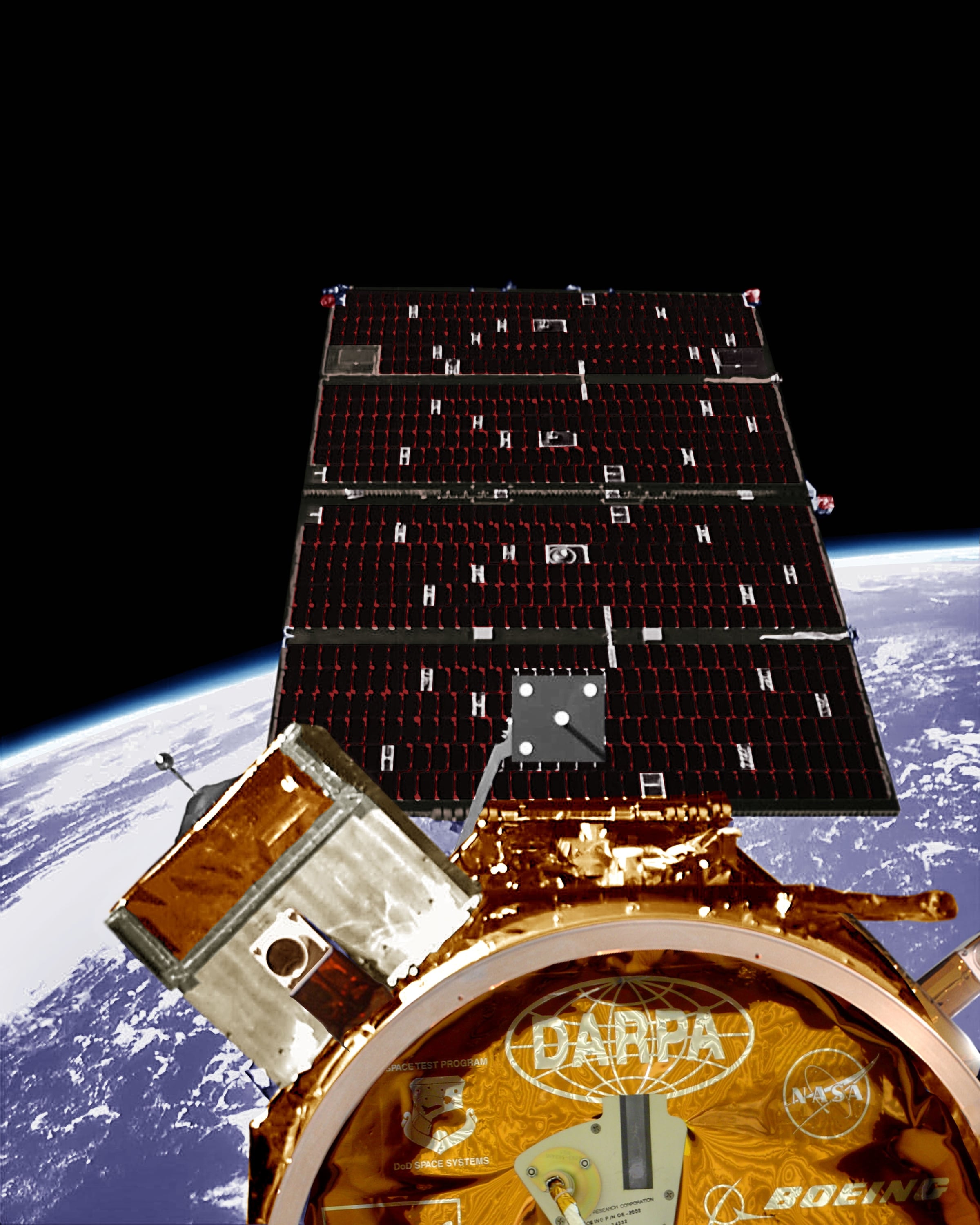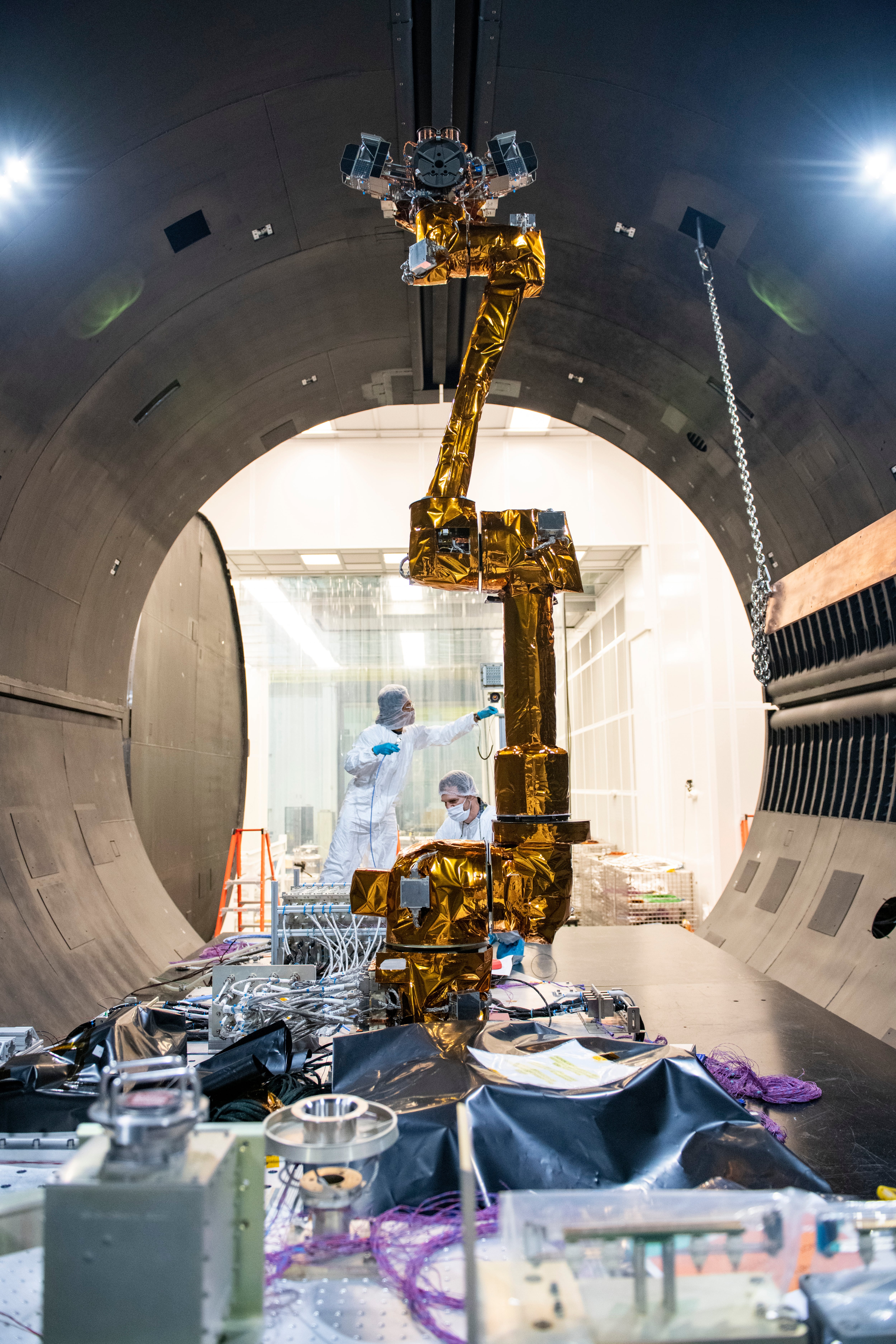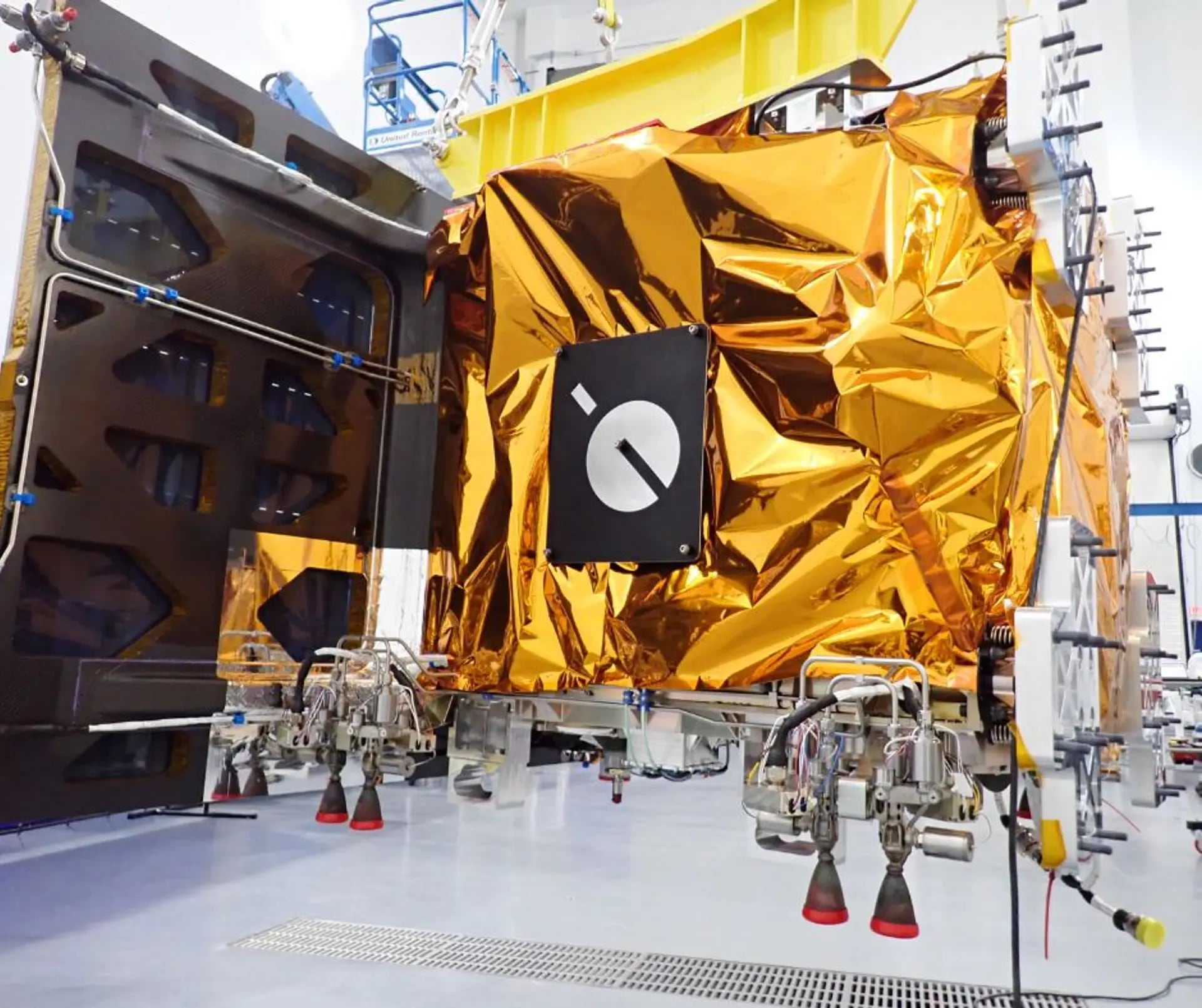In April 2007, the Defense Advanced Research Projects Agency demonstrated the ability to refuel a satellite in orbit — equipping a spacecraft with a robotic arm, docking it to another spacecraft and transferring nearly 32 pounds of hydrazine into its fuel tank.
The mission, known as Orbital Express, was full of technology firsts, according to Fred Kennedy, who led the project for DARPA.
Along with demonstrating the first-ever in-space refueling operation, the U.S. mission showcased the ability to use tracking and imaging sensors to attach to a receiving satellite and perform maintenance, such as swapping out a battery or replacing a flight computer.
“The big deal was autonomy,” Kennedy told C4ISRNET in a Feb. 27 interview. “We were able to show sort of a push-button approach to getting up close and personal to a spacecraft and delivering a variety of servicing capabilities.”
But four months after it took flight, the Air Force and NASA — DARPA’s mission partners for the effort — pulled the plug on the program.
The project, conceived to support a space-based radar program that was canceled before Orbital Express even got off the ground, lacked a clear mission application, according to the Air Force and NASA.

The outcome wasn’t particularly surprising for DARPA, whose projects often explore technologies that are ahead of their time. Kennedy said he and his team hung up their hats and assumed the refueling and servicing concepts they demonstrated would eventually resurface as agencies realized their importance.
“I think all of us thought maybe there would be some slight hiatus,” Kennedy said. “I don’t think anyone expected it would take 18 years to really start realizing the fruits of those successes.”
Now, in response to calls from U.S. Space Command officials to equip future space domain awareness satellites with refillable tanks by the end of the decade, the Space Force is exploring the military utility of refueling capabilities.
The Space Force in 2020 identified servicing, mobility and logistics as core competencies. The service has since crafted broad requirements for the mission area. Last year, it established a dedicated program office to coordinate near- and long-term development efforts as well as work with companies to demonstrate refueling capabilities.
As momentum builds toward operationalizing these concepts, current and former defense and industry officials say that due to pioneering missions like Orbital Express and efforts from the commercial sector to build on that work, today’s challenge isn’t necessarily a technological one. Instead, the task for the Space Force is to define both a clear vision for the military’s use of on-orbit servicing and its role in funding and establishing the standards that will shape the market in the near term.
From Kennedy’s perspective, who now leads the company Dark Fission Space Systems that aims to break ground in nuclear thermal propulsion, success will depend in large part on the Space Force backing up its rhetoric with action.
“Words are nice, but we really need to get moving,” he said. “I think we’ve already waited 18 years too long.”
Dynamic space operations
On-orbit servicing refers to a broad range of capabilities aimed at extending a satellite’s life or changing the way it performs a mission. That can include refueling, but it might also involve maintenance, upgrades or providing a secondary propulsion source.
While the Space Force started exploring on-orbit servicing more seriously a few years ago, the real push in that direction came in 2022 when Space Command began to recognize the satellites it uses to monitor the space environment were severely limited by the amount of fuel in their tanks.
The mission of the Geosynchronous Space Situational Awareness Program satellites is to essentially serve as a neighborhood watch in geosynchronous orbit, about 22,000 miles above Earth. The GSSAP satellites do this by performing what are known as rendezvous and proximity operations, drawing close to other spacecraft — including those operated by U.S. adversaries — to observe and provide data on them.

Like other military space assets, the satellites were launched with a limited amount of fuel, which typically dictates how long they can operate. While that may be appropriate for a GPS or communication satellite that doesn’t need to maneuver to perform its mission, Lt. Gen. John Shaw, then-deputy chief of Space Command, observed it was restricting how the Space Force uses GSSAP and other space domain awareness systems.
In one instance, Shaw told C4ISRNET, Space Command was speaking with GSSAP operators, asking them to prioritize observations of certain objects and apply different maneuvers to make it harder for the owners of those assets to know they were approaching.
The operators pushed back, according to Shaw, saying the satellites didn’t have enough fuel to perform those maneuvers and still remain useful through the end of their service lives.
That response concerned him. Space domain awareness is key to understanding threats in space, and the limitations on these satellites were impeding their ability to freely perform that mission.
“I was like: ‘How much is this constraining us? How are we in a learned helplessness state here where we write off the ability to go after certain targets?’ ” said Shaw, who retired from Space Command in October 2023 and was appointed to Sierra Space’s strategic advisory group in February. “When we started to peel it back, it’s rather significant.”

As he began to share his observation with others in Space Command, Shaw said the concerns started to “snowball,” eventually growing into a vision for what he calls dynamic space operations. The new way of operating involves more maneuverable satellites that can travel more freely to inspect the space environment or to avoid adversarial threats or debris.
The vision for dynamic space operations hinges on the availability of servicing, mobility and logistics technologies, like refueling, which is why last year Space Command called on the Space Force to quickly get those capabilities in place.
The service’s response was fast, and its new acquisition office, led by Col. Joyce Bulson, has been conducting tabletop exercises and planning demonstrations to better understand how the Space Force can meet operators’ needs today and in the future.
Bulson had recently told reporters that as the Space Force looks across the mobility and logistics enterprise, it is trying to leverage commercial technology as well as capabilities currently under development with NASA and DARPA.
DARPA is working with SpaceLogistics, a subsidiary of Northrop Grumman, to build a spacecraft to perform satellite repairs and upgrades through its Robotic Servicing of Geosynchronous Satellites program.
NASA, in partnership with Maxar Technologies, was developing an on-orbit servicing and manufacturing vehicle designed to perform satellite repairs. However, the agency canceled the $2 billion program March 1 due to cost and schedule overruns.
“All of these technologies and things we’re looking at are based on what others have already started doing,” Bulson said in a Jan. 31 media briefing at the Space Mobility Conference in Orlando, Florida. “We are not trying to duplicate the efforts that are being done.”
Analytical rigor
The Space Force is eyeing refueling demonstrations over the next few years to shape its plans moving forward. The service last year awarded Astroscale U.S. a $25.5 million contract in September to develop a refueling spacecraft. The goal is for the vehicle to refuel a satellite in a 2026 demonstration.
As part of that effort, the service is also working with the Defense Innovation Unit, the Pentagon’s commercial technology hub. The plan is for Impulse Space’s orbital servicing vehicle, called Mira, to host a fuel depot built by Colorado-based Orbit Fab. The depot will then refuel Astroscale’s vehicle via Orbit Fab’s Rapidly Attachable Fluid Transfer Interface, which feeds gas into the spacecraft. It will also support an Air Force Research Laboratory demonstration called Tetra-5.

Beyond refueling, the Space Force is also interested in other technologies that can provide satellites with additional propulsion, including jetpacks that can attach to satellites with depleted fuel tanks.
As the acquisition team plans for refueling demonstrations, the service is pursuing additional analysis to better understand how the capability contributes to its role in future conflicts. A new Space Futures Command, aimed at improving the service’s analytical rigor, will likely consider satellite refueling as one of its first emerging mission sets.
Doug Loverro, who served as the deputy assistant secretary of defense for space policy from 2013 to 2017 and is now an independent consultant, told C4ISRNET it’s important for the Space Force to study use cases for refueling before adopting a formal program.
“There’s a lot of discussion, but there’s not a lot of analysis that shows how this would work,” he said. “There’s not been a really good analysis done to show where in the operational chain this would work, what would the requirements be and those kinds of things.”
Kennedy noted that while Space Command has been vocal about needing some sort of refueling capability for its space domain awareness systems, the service should consider what other satellites and missions could benefit from mobility and logistics capabilities. That includes transfer vehicles, which are designed to move spacecraft to different orbits.
“If all you’re saying is you want GSSAP to last a little longer,” he said, “that doesn’t feel like dynamic space operations.”
“In my opinion, this is all about access and the effects that you can achieve once you get to all the places you need to go. You need access to all the regimes,” he added.
Signaling demand
Though the Space Force is making acquisition plans and establishing an analytical foundation for its refueling endeavors, it has yet to request funding for these efforts through its annual budget submission. Instead, it has relied on plus-ups from Congress to pay for servicing, mobility and logistics demonstrations as well as prototyping efforts, including $30 million in fiscal 2023 that funded its contract to Astroscale.
Bulson said the Space Force has no plan to invest a large amount of funding into a bespoke government satellite refueling capability. Rather than be the anchor tenant, the service wants to follow the lead of commercial companies in this area.
“We’re looking to leverage commercial services to the maximum extent possible,” Bulson told reporters. “We’re not looking for a significant government investment in bringing these capabilities to bear.”
She would not confirm whether the service will request funding for space servicing efforts in its FY25 budget, which is expected to be released this month.
Many of the companies developing refueling capabilities and other servicing systems say that in the near-term, the Space Force is the most logical customer because there isn’t yet a strong commercial business case for satellite refueling.
Erik Daehler, vice president of orbital systems and services for Sierra Space, said it’s more likely for a commercial satellite to be decommissioned because its payloads need to be replenished than it is for it to run out of fuel.

Companies have also shifted toward launching smaller, lower cost, more disposable spacecraft with shorter mission lives into low Earth orbit, an altitude of about 1,200 miles, further reducing the need for refueling services.
“That starts to point to the U.S. government as being a primary anchor tenant,” Daehler told C4ISRNET.
While a commercial business case may materialize, some businesses say the military needs to play a greater role in helping the nascent market take shape. That means sending a stronger demand signal in the form of consistent funding and clear requirements.
Lauren Smith, who leads Northrop’s in-space refueling efforts, said the Space Force’s establishment of a program office dedicated to servicing, mobility and logistics is a positive step, but it’s not enough.
“Actually seeing it show up as a line item in a budget is critically important for this technology to progress,” Smith told C4ISRNET. “If the funding isn’t there to sort of meet that sense of urgency that we’re hearing from them, it’s really a question of how fast do they need us to go. And that will help to accelerate and propel things forward.”
She added that while the Space Force can communicate its needs through funding and budget lines, clear requirements from Space Systems Command would also help companies ensure the systems they’re developing will meet the service’s military-unique needs.
“You want to minimize redesign,” Smith said. “And so if we have a clear understanding from the start of what it is that they’re looking to do, we can be more targeted and more efficient.”
Interface standards
Companies are also calling on the Space Force to establish standards for the refueling ports or interfaces that future satellites will need.
The service has worked with several companies to approve interfaces that could serve as standards for those satellites, and in January it announced the approval of Northrop’s Passive Refueling Module as one option.
The Space Force is also evaluating interfaces from other companies, including Orbit Fab, and Bulson said the service wants to make more designs available for broader use.
Sierra Space’s Daehler said establishing common standards is important for firms that are developing refueling and other servicing capabilities — and want to ensure the interfaces they use will be compatible.
He said there’s a particular urgency for Sierra Space, which is designing the Dream Chaser spaceplane for NASA and is aiming for a 2025 launch of a separate rapid demonstration platform.
“We just want a standard that can be adopted so that when we adopt it ourselves, we know that it’s going to be usable,” Daehler said. “And from our refueling standard needs, we need to be ready for launch in 2025. That means a standard needs to be available right now.”
Courtney Albon is C4ISRNET’s space and emerging technology reporter. She has covered the U.S. military since 2012, with a focus on the Air Force and Space Force. She has reported on some of the Defense Department’s most significant acquisition, budget and policy challenges.





